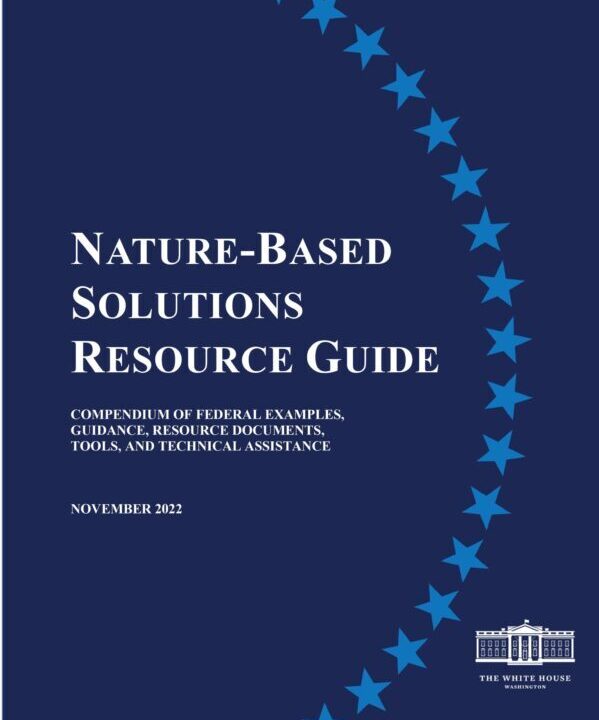Abstract or Summary

The impacts of climate change and the continual loss of nature endanger American communities, ecosystems, and infrastructure. To help us achieve climate, conservation and equity goals, the Biden-Harris Administration is investing in nature-based solutions. These solutions are actions to protect, sustainably manage, or restore natural or modified ecosystems to address societal challenges, simultaneously providing benefits for people and the environment.
Nature-based solutions have been used successfully by many federal agencies. Yet, they are far from reaching their full potential. One challenge to further adoption is limited awareness and skills for using nature-based solutions. This guide provides a compendium of federal and partner cases and resources that can help overcome this challenge.
The guide contains 30 examples of ways that federal agencies have used nature-based solutions to achieve their goals. The diverse set of examples demonstrates that nature-based solutions can provide many different benefits. For example, nature-based solutions have been used to make federal buildings and assets more resilient to natural hazards and climate impacts. These solutions have also been used to reduce operation and management costs, like those for heating and cooling and stormwater management. Federal agencies have also supported communities in their use of nature-based solutions. For example, communities have used federal funding of nature-based solutions to build resilient low-income housing and make roads safer. Wetlands and native plants have been used to capture stormwater, reducing flooding and costs for stormwater management systems. Communities have grown rain gardens and shade trees as part of their journey towards improved public health. Good jobs have been supported for ranchers, renewable energy workers, engineers and other sectors. Shaded fire breaks have reduced the risk of catastrophic wildfires. Roads and homes have been strengthened against future erosion from intense storms and sea level rise. Plants valued by Native communities have been revived, reconnecting people to important cultural practices. Communities that have been denied access to nature in the past have been connected to greenspaces. Science and evidence have been advanced, using these experiences as opportunities to learn. And through all of these efforts, nature has been saved or strengthened.
The guide also contains a summary and links to 177 federal knowledge resources, tools, guidance, and technical assistance on nature-based solutions. Together, these examples and resources provide a starting point for learning about nature-based solutions and effectively implementing them. There are other challenges that slow the deployment of nature-based solutions. These are addressed in a companion report on “Opportunities to Accelerate Nature Based Solutions: A Roadmap for Climate Progress, Thriving Nature, Equity and Prosperity.”